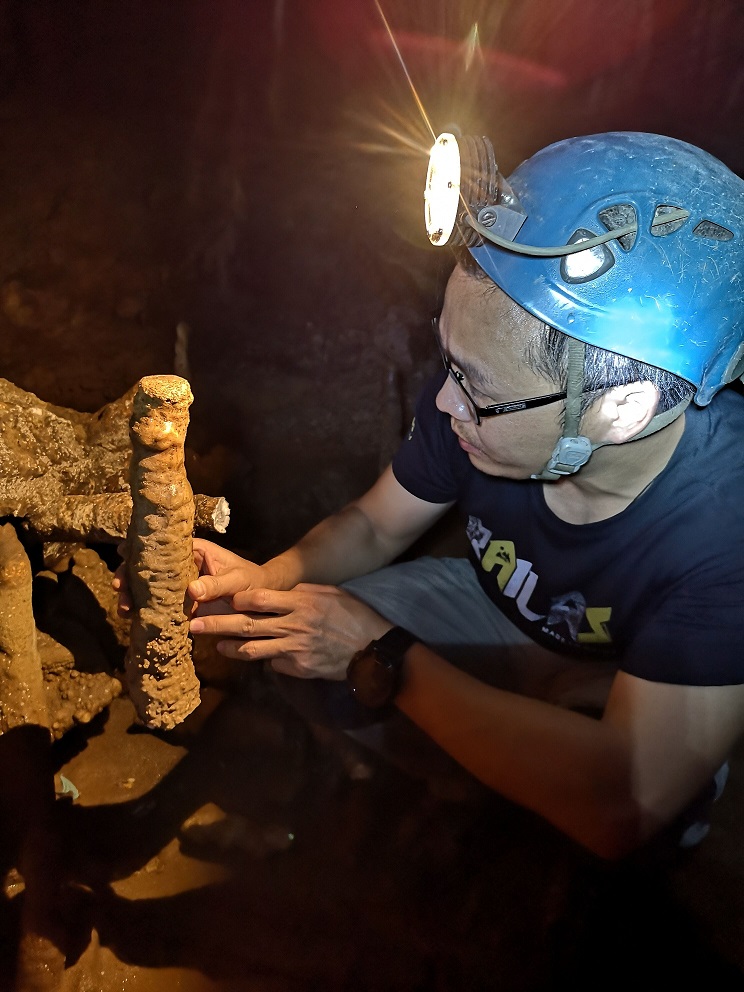Rainfall variations in the tropics not only potentially influence 40% of the world’s population and the stability of the global ecosystem, but also the global hydrologic cycle and energy balance.
Beginning in the 20th century, a decline in northern tropical rainfall has been observed, with researchers unsure whether the decline stems from natural or anthropogenic causes.
New rainfall research has shed some light on this question, but left the final answer up in the air.
Recently, an international team led by Prof. TAN Liangcheng from the Institute of Earth Environment(IEE) of the Chinese Academy of Sciences developed a 2700-yr rainfall record of the northern central Indo-Pacific region. The team’s findings were published in PNAS on August 12.
The researchers got official permission to collect stalagmites from the Klang Cave in southern Thailand. They used oxygen records and radiometric U-Th dating techniques with precision of half a year at best on three stalagmites to reveal regional rainfall history over the past 2700 years. Results show millennial-scale decreasing regional rainfall, similar to other records from the northern tropics and opposite to southern tropical records.
This tropical interhemispheric precipitation seesaw pattern was most likely driven by changes in summertime insolation in each respective hemisphere. Notable centennial-decadal-scale dry (950-1150, 1200-1350, and 1910 to present) and wet (400-800) climate episodes occurred.
The extreme decadal wet event during the late 14th century and early 15th century coincided with extensive floods and destruction of the water management systems in Angkor, Cambodia, indicating the hydroclimatic impact on the decline of the Khmer Empire in the 15th century.
The scientists also developed a 2000-yr Intertropical Convergence Zone (ITCZ) shift index record, which shows an overall southward shift over the past two millennia, and southward mean positions of ITCZ during the early Medieval Warm Period and the Current Warm Period in the central Indo-Pacific.
The scientists note that the drying trend in the northern tropics since the early 20th century is similar to that from 950-1150 AD, which was attributed to a southward ITCZ shift and enhanced El Niño-like conditions. As a result, possible anthropogenic rainfall remains indistinguishable from natural variability in the northern tropics, Prof. TAN said. In other words, no clear case can be made that the recent northern tropical drying trend is caused by anthropogenic forces.
Although the cause of the last century’s drying trend is uncertain, Prof. TAN sees a benefit in understanding historical rainfall trends.
“The rainfall variability during past warm periods can provide a historical analog to future trends under global warming, and help improve the precision of climate models,” Prof. TAN said.

Sampling in Klang Cave (Credit by TAN, Liangcheng)
Contact: Bai Jie, Institute of Earth Environment, Chinese Academy of Sciences, Xi'an, China. Email: baijie@ieecas.cn
 © 2015 Institute of Earth Environment,CAS
© 2015 Institute of Earth Environment,CAS Address:No. 97 Yanxiang Road, Xi'an 710061, Shaanxi, China

 Location :
Location :